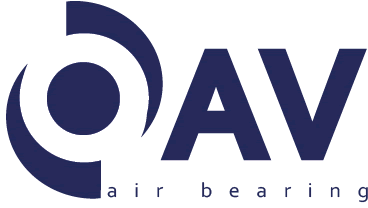
What is an Air Bearing?
An air bearing is a non-contact, frictionless bearing system that uses a thin layer of pressurized gas. The air acts as the lubricant, creating an evenly distributed gas film between the surface and the substrate. The result? No friction, no maintenance, ultra-precision, and clean motion with higher stiffness.
Air bearings are commonly used in industries where precision, ease of movement, and low friction are important, such as manufacturing, transportation, metrology, and more. For instance, they are used in maglev trains and aircraft landing gear systems, to provide a smooth and efficient ride.
In addition, air bearings are used in scientific research for applications such as precision measurement, testing, and experimentation. They provide a stable, low-friction platform for a wide range of research purposes. Other applications for air bearings include automotive, automation, turbo machinery, robotics, semiconductor manufacturing, and medical equipment.
Why should you consider OAV Air Bearings?
OAV Air Bearings are designed to have no friction and an infinite lifespan. The coefficient of friction for these bearings is a measure of the resistance to motion between the surface and the substrate when an air film is present, and is determined by the movement of the air rather than by the contact between the surfaces. Therefore, in zero velocity, there would be no friction, potentially allowing for theoretically infinite motion resolution.
Air bearings are contaminant-free. Clean environments generate virtually no particulates that can become airborne. Thus, they are ideal for many cleanroom applications. In addition, OAV Air Bearings have high speed nano-precision, superior position accuracy and repeatability, and no heat generation at high speeds.













